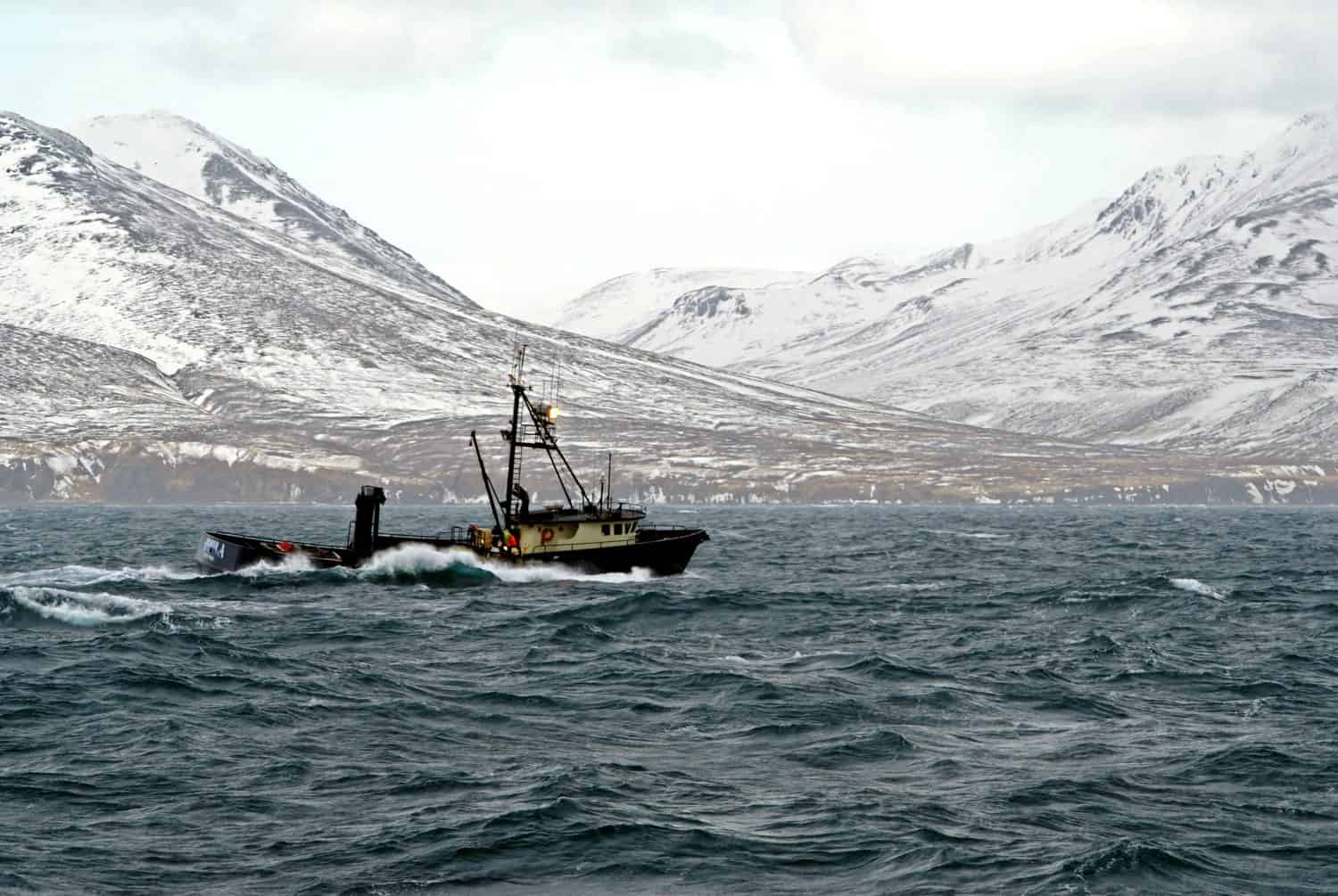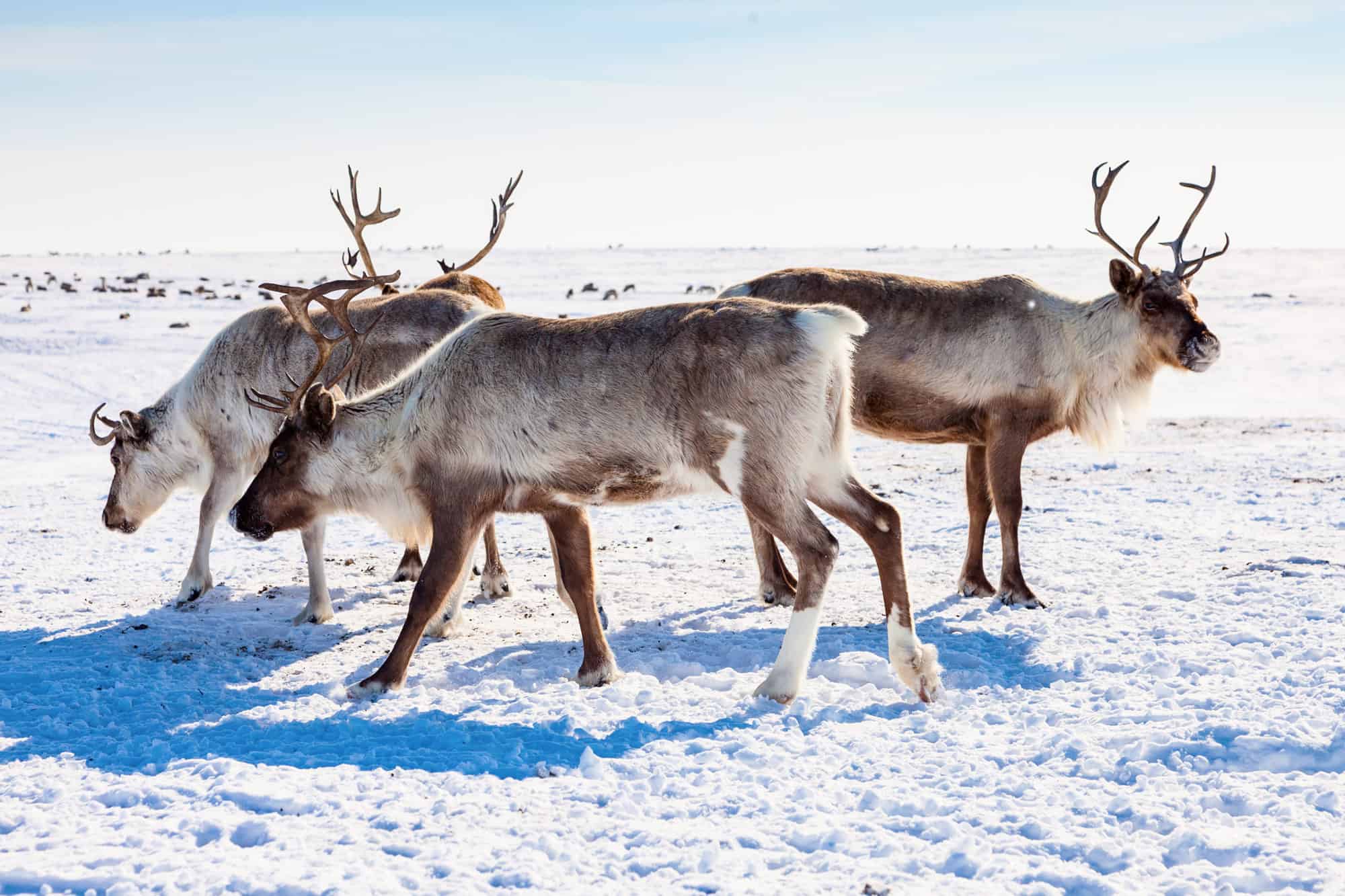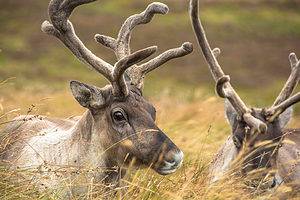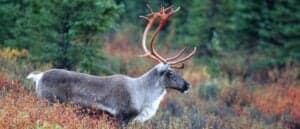St. Matthew Island is an uninhabited, remote place in Alaska, where very few mammals can survive. This island features freezing-cold conditions and is hundreds of miles away from the nearest human settlement.
In the 1940s, the United States Coast Guard introduced a group of reindeer to St. Matthew Island. In the following decades, the reindeer population exploded, but suddenly they completely disappeared. So what happened to the reindeer on St. Matthew Island?
About St. Matthew Island
St. Matthew Island is the most remote place in Alaska. The island lies within the Bering Sea and is completely uninhabited by humans. In fact, the closest human settlement is over 200 miles away from St. Matthew Island.
Humans aren’t the only creatures who avoid St. Matthew Island. Weather and living conditions on the island can be quite bleak, though it does provide breeding habitats for over 140 species of birds, according to the United States Geological Survey.
Today only two species of mammals live on St. Matthew Island — arctic foxes and insular voles. These creatures are well adapted to the island’s cold and harsh conditions. For a time reindeer also made their home on St. Matthew Island.

St. Matthew Island is the most remote place in Alaska. It is an uninhabited island that is hundreds of miles from the nearest human settlement.
©photomatz/Shutterstock.com
What Are Reindeer?
Reindeer (Rangifer tarandus) aren’t the stuff of holiday legends. These large ungulates are the same species as caribou. However, in North America, the species is typically called caribou, while the animals are referred to as reindeer in Eurasia.
Additionally, caribou are wild animals, whereas reindeer may refer to wild, semi-domesticated, or domesticated creatures. In 1892 Reverend Doctor Sheldon Jackson introduced reindeer to western Alaska, writes National Park Services.
For the next 60 years, Inupiat communities and others learned to herd reindeer through apprenticeship programs. After the 1930s the practice of reindeer herding began to decline, but free-ranging reindeer herds still exist on the Seaward Peninsula. These reindeer sometimes run off with herds of wild caribou in the area.
Appearance
Reindeer vary in appearance depending on their diet and environment. Some can grow quite large and weigh over 500 pounds.
Reindeer living in woodland environments typically have dark brown coats, while those in very snowy homes may appear almost entirely white. Baby reindeer (called calves) are born with dark chocolate brown coats.
Unlike most other deer species, both male and female reindeer grow horns, according to the U.S. Food & Drug Administration (FDA). They also have the largest and heaviest antlers of all living deer species, compared to their body size. Reindeer antlers fall off and grow back each year.
Reindeer Arrive on St. Matthew Island — 1944
In 1944 a fascinating experiment began on St. Matthew Island. The United States Coast Guard introduced 29 Nunivak Island reindeer onto the uninhabited island, reports the Anchorage Daily News. The reindeer were intended to serve as a backup food source for 19 men stationed on St. Matthew Island along with a radio navigational system.
As the war neared an end, the men left, but the reindeer remained. With no natural predators and an island filled with lichen, the reindeer population flourished.
By 1957, biologist Dave Klein arrived on St. Mattew Island and found that the reindeer population had increased to over 1,3000. Six years later the population reached 6,000. However, by the 1980s the reindeer population on St. Matthew Island completely disappeared. So what happened to these lichen-loving creatures?

A group of reindeer were introduced to St. Matthew Island. Though their population briefly exploded, they eventually died out.
©iStock.com/Artpilot
St. Matthew Island Reindeer Numbers Plummet — 1966
Klein returned to St. Matthew Island in the summer of 1966. Upon his discovery, Klein found that the herd of 6,000 had shrunk to only 42 reindeer. Of this group, only one of these reindeer was male. Klein observed that the male had abnormal antlers and likely could not reproduce.
Over the next decade, the reindeer population on St. Matthew Island completely died out. Klein suspected that an extreme winter may have pushed the island’s reindeer population over the edge.
Why Did the St. Matthew Island Reindeer Disappear?
Together with climatologists Martha Shulski and John Walsh, Klein found that the winter of 1963-1964 was one of the most extreme on record in the northern Bering Sea. Not only did the reindeer experience constant windstorms and freezing temperatures, but a record amount of snow hid away the reindeer’s already depleted food source.
Most of the reindeer on St. Matthew Island did not make it through that winter. Pregnant reindeer especially suffered and died from the harsh conditions. Though some reindeer managed to initially survive, their population was irrevocably damaged and would eventually disappear altogether.
The photo featured at the top of this post is © pawopa3336/iStock via Getty Images
Thank you for reading! Have some feedback for us? Contact the AZ Animals editorial team.






